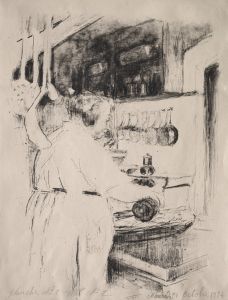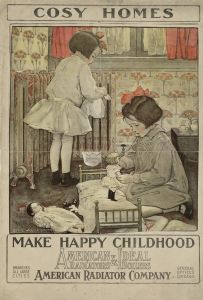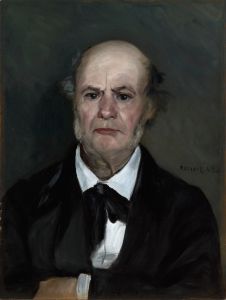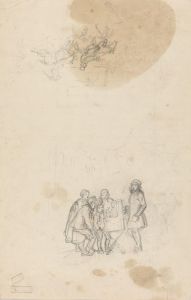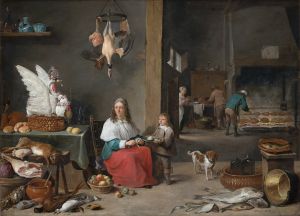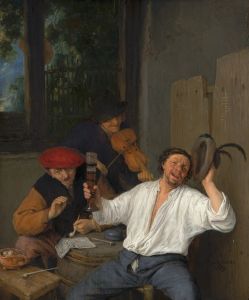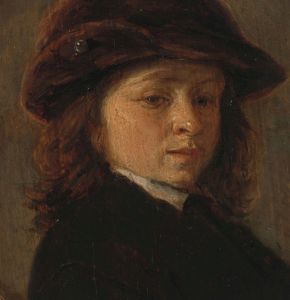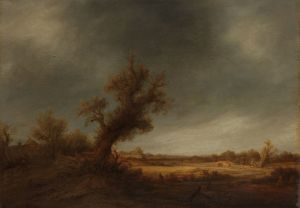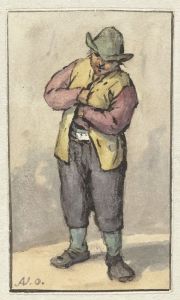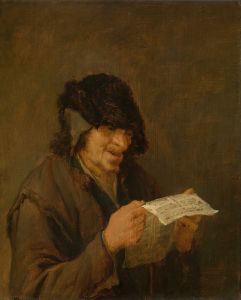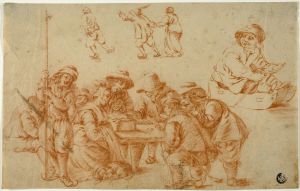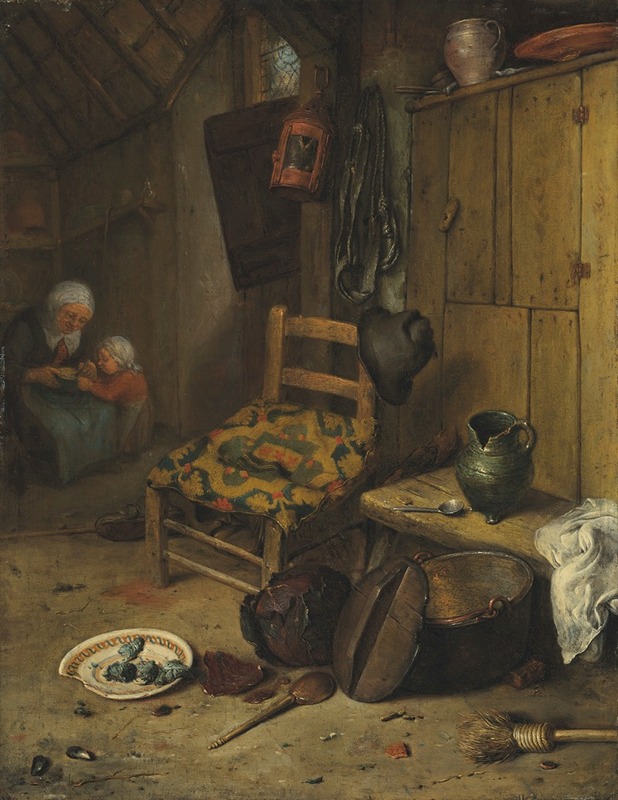
A kitchen interior with a mother and child
A hand-painted replica of Adriaen van Ostade’s masterpiece A kitchen interior with a mother and child, meticulously crafted by professional artists to capture the true essence of the original. Each piece is created with museum-quality canvas and rare mineral pigments, carefully painted by experienced artists with delicate brushstrokes and rich, layered colors to perfectly recreate the texture of the original artwork. Unlike machine-printed reproductions, this hand-painted version brings the painting to life, infused with the artist’s emotions and skill in every stroke. Whether for personal collection or home decoration, it instantly elevates the artistic atmosphere of any space.
Adriaen van Ostade was a Dutch Golden Age painter known for his genre scenes depicting peasant life. One of his notable works is "A Kitchen Interior with a Mother and Child," which exemplifies his skill in capturing the everyday life of the lower classes in 17th-century Holland. Van Ostade was born in 1610 in Haarlem, where he spent most of his life and career. He was a student of Frans Hals, a prominent portrait painter, and was influenced by the works of Rembrandt and the Flemish painter Adriaen Brouwer.
"A Kitchen Interior with a Mother and Child" is a fine example of van Ostade's ability to portray intimate domestic scenes with a keen eye for detail and a warm palette. The painting typically features a rustic kitchen setting, a common theme in van Ostade's work, where the simplicity of rural life is depicted with authenticity and charm. The mother and child are usually shown engaged in a mundane activity, such as cooking or cleaning, which reflects the daily life of the time.
Van Ostade's work is characterized by its detailed representation of textures and materials, from the roughness of wooden furniture to the softness of clothing. His use of light and shadow adds depth to the scene, creating a sense of realism and intimacy. The artist often employed a warm color palette, dominated by browns, ochres, and muted reds, which contributed to the cozy and inviting atmosphere of his interiors.
The figures in van Ostade's paintings are typically rendered with a sense of individuality and character, despite their often humble circumstances. In "A Kitchen Interior with a Mother and Child," the expressions and postures of the figures convey a sense of contentment and domestic harmony. This focus on the human element is a hallmark of van Ostade's work, as he sought to capture the essence of everyday life with empathy and humor.
Van Ostade's paintings were highly popular during his lifetime, and he enjoyed considerable success. His works were collected by patrons across Europe, and he was a member of the Haarlem Guild of St. Luke, an association of artists. Van Ostade's influence extended beyond his own time, as his genre scenes inspired later artists who sought to depict the lives of ordinary people.
"A Kitchen Interior with a Mother and Child" is a testament to van Ostade's mastery of genre painting and his ability to convey the warmth and simplicity of rural life. His work remains an important part of the Dutch Golden Age, offering insight into the social and cultural context of 17th-century Holland. While specific details about this particular painting may be limited, it is representative of van Ostade's broader oeuvre and his contribution to the genre of domestic interior scenes.






